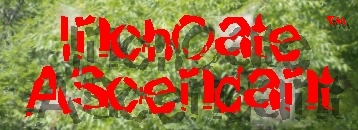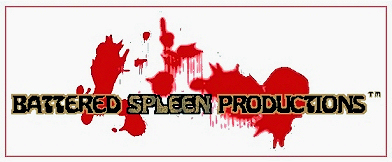 | |||||||||||||||||||||||||||

April 24, 2009 Farewell to the Fresh FleshOn Wednesday, October 10, 2007 I started a project of which I did not know the scope and couldn't not fathom the length and breadth that it would achieve. I can no longer remember if it was the kick off of Horror Hump Day that began this momentous project. I started blogging on Wednesday's at R.G. Male's Dark Corners two weeks earlier, not counting a note in August that I would be taking a vacation from the blog to work on other things. Horror on Hump Day--yes it's a cheeky title for a mostly horror blog--in any event was interrupted only two weeks later by the annual 13 Nights of Halloween. Speaking of cheeky, those who haven't left out of boredom have to have noticed I haven't named what it is that I'm talking about. Here's one more sentence to further stretch the anticipation. Ok, ok. I'm going on about my "Anatomy of a Horror Setting" blog articles. It encompasses twenty looks at the possibilities open and the questions to be asked when sitting down to create a horror setting populated by psychics. From there it moved onto twenty discussions about horror settings making use of magic. Seven articles about science fiction horror hybrid settings followed that. Then I capped it off with eight parts considering fantasy and horror crosses including Victorian Age horror. That's fifty-five articles, and nineteen months of work. Somewhere along the line an author I hadn't been aware of approached me and suggested that I should turn the series into a book. This was quite high praise indeed, and it is a suggestion upon which I intend to act. I would like to extend my gratitude to Lee Pletzers, who will soon be staking violent claim to www.terror.co.nz and is the gracious host of Masters of Horror at horrorwriters.ning.com for suggesting the Anatomy of a Horror Setting book. Music: Bus Stop by The Hollies. April 17, 2009 Down the Rabbit HoleOnce there was a note, and it spawned another note, one that was a Deeper look. That deeper look covered things that were not a part of the original note. It expanded on one or two concepts of the original note. Then when it was done it spawned another note. How does it do that? Aesthetically how does the current one link to the new one on the page when that note ends with a link back to the original note--the first one in this now three-link chain? That is the stage awaiting decision now on Deeper TS-Ref#3. The first step appears to be to differentiate between the two links starting with indicating that one of them is a link back to the original 'shallow' note. The visual representation, not exactly an icon in this case but close to it in spirit, should also speak to the difference between one note and the next, perhaps even including directionality. Those are web design matters regarding notes to notes about notes. At the ideas level, the semantic layer, where the meanings live, there are different connection methods. Venn diagrams are a series of overlapping circles illustrating the connections between ideas, concepts, or groups of related things where the overlap between circles represent how close or deep the relationship is between the items. These diagrams can be complicated with as many circles as are needed to demonstrate the connections. They are a quick way to see how closely related things are, but hardly much more. As such they still require taking an in-depth look. The amount of connection between notes may bear little importance to understanding the relationship of the connected notes. The question then is how much of what kinds of meaning are necessary. Hardly a simple question. Music: Judgement of Heaven by Iron Maiden.
April 3, 2009 Notes Going SupernovaThere is a best first step in taking notes where research is involved. Read the material with an eye toward learning what it has to say. Sounds beyond simple, redundant even. The thing to keep in mind is to look for not only what is new, but also what is old. What part of it that is already known is important to the topic of the research? What of the known information and issues is important to the topic for which the research was undertaken? Is there such a distinction for the given project? Last time there were four articles listed that came up in a research session. Each one spawned notes about the article as can be seen at TechStop™. Those notes look at what appears to be important in the articles that can be put to use in a plot or a setting. That is their goal. The kinds of notes available at TechStop show details of interest, point out useful concepts, and via the tags leave a trail to return to the note at a later time. The tags lead to other articles and notes on the same topic with the same focus. There is one other thing those notes do. They make connections between themselves as shown by the shared title words, similarly connected ideas, and overlap in tags. More important to this discussion, they spawn additional notes. Articles 1 and 2 have private sub-notes with just reference numbers like Ref#6. Situated above the articles is a link to a public note titled Deeper TS-Ref#1, regarding all four articles. This deeper look is another note pointing out details and asking questions. It is also a jump point for yet more notes, and soon, tags. Music: Supernova by Fear Factory.

|
About Me Name: Robert G. Male Location: Ontario, Canada See Full Profile Recent PostsArchives
Advertising
|
||||||||||||||||||||||||||
|
|||||||||||||||||||||||||||


